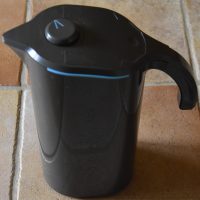 Peak Water, for those who don’t know, is a home water filter designed specifically for coffee. I’ve written a wider article about water and why it’s important for coffee as part of my Making Coffee at Home series, but for now I’ll just note that I’ve been filtering my water at home (using a regular water filter jug) for many years (long before I started the Coffee Spot) and really notice the difference when I don’t.
Peak Water, for those who don’t know, is a home water filter designed specifically for coffee. I’ve written a wider article about water and why it’s important for coffee as part of my Making Coffee at Home series, but for now I’ll just note that I’ve been filtering my water at home (using a regular water filter jug) for many years (long before I started the Coffee Spot) and really notice the difference when I don’t.
What makes Peak Water special is that it has been designed to produce water that’s optimised for brewing coffee. The team behind Peak Water has some form on this subject, with leading members Maxwell Colonna-Dashwood and Christopher Hendon having written the well-regarded book, Water for Coffee, which was published in 2015. So, when Peak Water was launched on Kickstarter in April 2018, I was one of its first backers.
Now, just over two years later, my Peak Water filter has arrived! Excitedly, I unpacked it, put it together and started using it. But what exactly is it? What makes it different from a normal water filter and what’s it like to use? And perhaps most importantly of all, does it make my coffee taste better?
You can see what I found out after the gallery.
When it was launched in April 2018, Peak Water was quickly over-subscribed, such was its popularity. Then followed the long wait while the design was finalised and prototypes were turned into products, which always seems to take longer than people anticipate. My Peak Water filter arrived by courier in the middle of April, part of an initial set of shipments fulfilling the Kickstarter orders. It then went on general sale, although it quickly sold out: should you be interested in purchasing one, you can register on the Peak Water website, and the team will e-mail you once it’s back on sale.
So, what do you get for your money? Well, at one level, a fairly standard filter jug: mine came with a single water filter, but there is an option to buy a starter pack with an additional two filters (making three in all). You’ll also get a user guide (which might give you a hint that this is no ordinary filter jug) and, most interesting of all, two testing strips, which enable you to determine how hard your water is (that is, the amount of calcium and bicarbonate there is in the water: together they combine to form limescale).
Every domestic filter jug I’ve used is basically a one-size-fits-all operation: you put the filter in, fill it with water and filtered water comes out. Peak Water is different because you can change the amount of filtration using the dial on the top of the jug. This has a scale from one to five: the higher the number, the longer the water takes to go through the filter. The longer the water takes, the more of the mineral content that’s filtered out.
This is where the testing strips come in. They enable you to determine the hardness of your water: the harder your water, the more filtration is required to get the optimum mineral level. For really hard water, set the jug to five. In my case, the testing strip put me right in the middle, requiring a setting of three.
With that out of the way, you just need to set up the filter jug and off you go. If you’ve used a standard filter jug before, you’ll already be familiar with this. Fit the filter, fill it up with water, let it filter through, then discard the filtered water. Repeat the process, and you’re ready to go.
[It’s worth noting that the Peak Water filter packs are fully recyclable: once you’re done with them, you can post them back to Peak Water (UK only) and the components will be recycled, mostly being reused to make new Peak Water filter packs].
You can see what I made of my Peak Water after the gallery.
Let’s start with the design. There’s nothing fundamentally wrong with the Peak Water, but compared to my regular Brita filter jug, I found it a little less user-friendly. For starters, fitting the filter is slightly fiddlier, since you must ensure that the rod (which connects the rotary dial on top of the jug to top of the filter pack) clips securely onto the filter pack. It took me a couple of goes to get it right, but since you’ll only be doing it once every month or so, it’s only a minor inconvenience.
Another issue I have with the Peak Water is that it’s taller than my existing jug and, since I have a relatively low tap in my kitchen sink, I find it tricky to get the jug under the tap, so much so that I now fill up a measuring jug first, pouring the water from that into the Peak Water. Again, a relatively minor thing.
Finally, the jug is opaque (whereas every other filter jug I’ve owned is transparent) so I can’t easily tell how much water there is left in the jug, which is surprisingly annoying. I go to fill my kettle to make some coffee, discover I don’t have enough water, then have to fill the jug and wait for the water to filter through (and the user guide is very insistent that you let it all filter through before you pour, something that takes 1½ minutes on a setting of three, 2½ minutes on a setting of four and a whopping 4½ minutes on five!). I also can’t tell if the water has finished filtering through without opening the lid to look inside.
I know it sounds minor, but I found it really annoying, to the extent that I’ve changed the way I make my coffee just to avoid this problem. I used to fill the kettle just before starting a brew, but now I fill it as soon as I’ve finished the last one, that way ensuring that I’ll have enough water next time.
One the plus side, I found the construction sturdy and the jug itself well put together. I know that some other reviewers have had issues with the construction, but all I can say was that mine is fine. As a domestic water jug, I’d say it’s on a par with my Brita filter, which I’ve been using for year.
However, the real question is, does it make my coffee taste better? You can find out after the gallery.
As you can see from the gallery, the testing strip suggested a reading of 120, which equates to a setting of three, which is how I’ve been using my Peak Water for the bulk of the time. I’d love to say that It made my coffee sparkle, bringing out hidden depths, enhancing flavours, etc, but it didn’t.
That doesn’t mean it didn’t work, by the way, since I was comparing it to coffee made using my existing water filter (for the record, a standard, domestic Brita jug). In comparison to straight Guildford tap water, absolutely it made a difference. I also note that I have a notoriously poor palate when it comes to distinguishing flavours in coffee. However, having tried the Peak Water filter across a range of coffees and brewing methods, I’m not getting noticeably different results compared to water from my standard filter.
I also tried a setting of four on the Peak Water, corresponding to a reading of 180 on the testing strip (see the gallery for more details). This was partly in case I had got the setting wrong, but also because the user guide has a section at the back on how you may want to vary the setting based on your particular coffee and/or brewing method. I was therefore interested to see if it made any difference. Sadly, for me, it didn’t, or, to be more accurate, no difference my limited palate could detect!
In conclusion, is the Peak Water worth it? For me, it’s hard to say. I don’t regret backing Peak Water, but I will probably end up taking the jug to my Dad’s. Although the water there is much softer, it still makes terrible coffee, so I’ve taken to using a filter when I’m there as well! I’m curious to see if the Peak Water makes a difference with softer water.
Whether it will make a difference for you is largely a matter of personal taste/what sort of water you have. For what it’s worth, my personal recommendation is that if you are happy with your current water and how your coffee is tasting, it might not be worth the investment. On the other hand, if you aren’t happy with the way your coffee is coming out, then I would consider the Peak Water, if only for the control it gives you over the level of filtering.
Note that this is a slightly updated version from that originally published to address feedback on the original. I added a section on the construction quality of the Peak Water and I also added some more notes on my experimentation with the Peak Water’s settings. Finally, I have (hopefully) made my conclusions a bit clearer.
If you want to see what someone with a much more discerning palate than me made of the Peak Water filter, then James Hoffman has both reviewed Peak Water and compared it to other domestic water filters. He’s also produced an excellent introduction to water for coffee which is well worth watching. You can also read my article on the subject, part of my Making Coffee at Home series. Finally, you can also see what friends of the Coffee Spot, Bean There At, made of their Peak Water.
December 2020: Peak Water has won the 2020 Most Popular Coffee Spot Award.
If you liked this post, please let me know by clicking the “Like” button. If you have a WordPress account and you don’t mind everyone knowing that you liked this post, you can use the “Like this” button right at the bottom instead. [bawlu_buttons]
Don’t forget that you can share this post with your friends using buttons below.

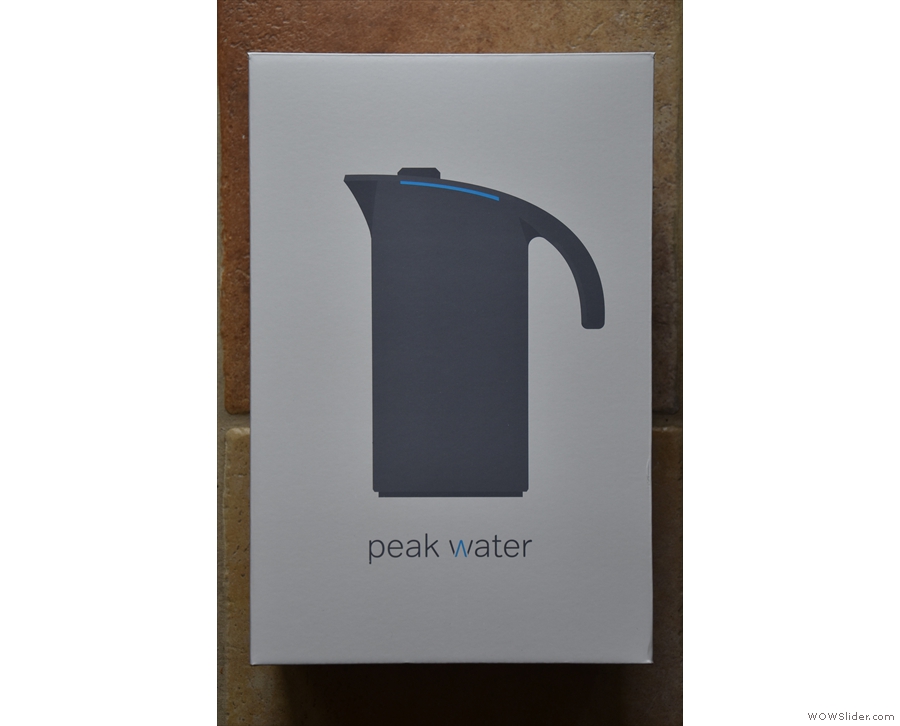
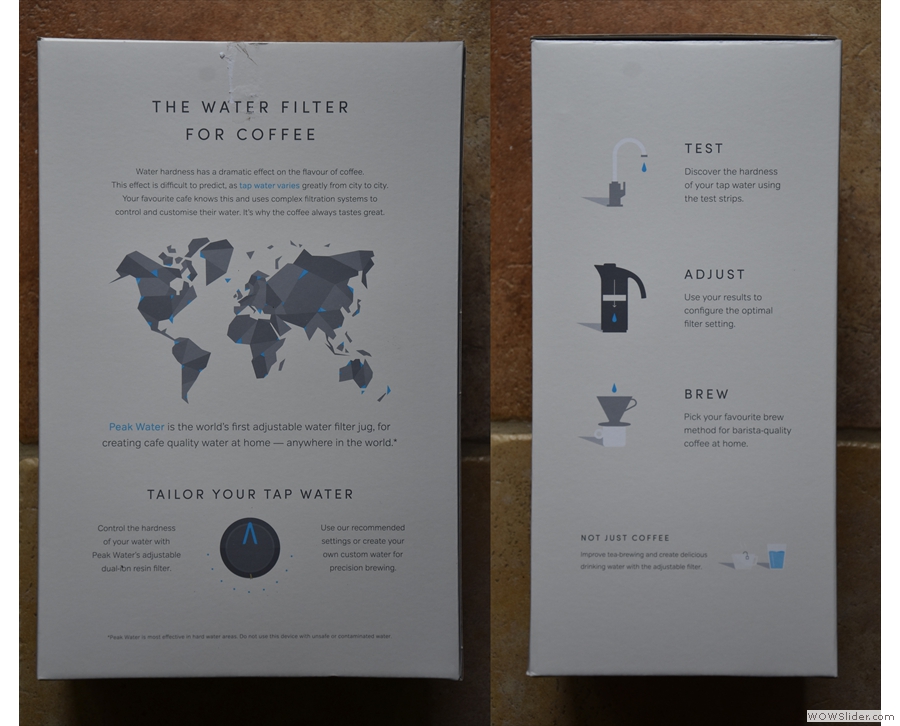
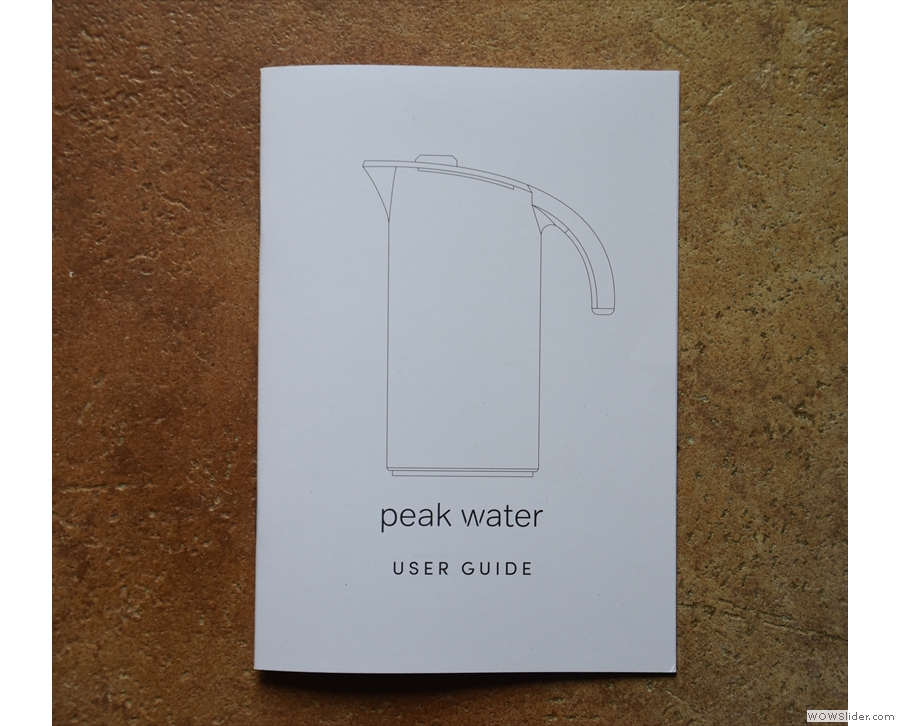
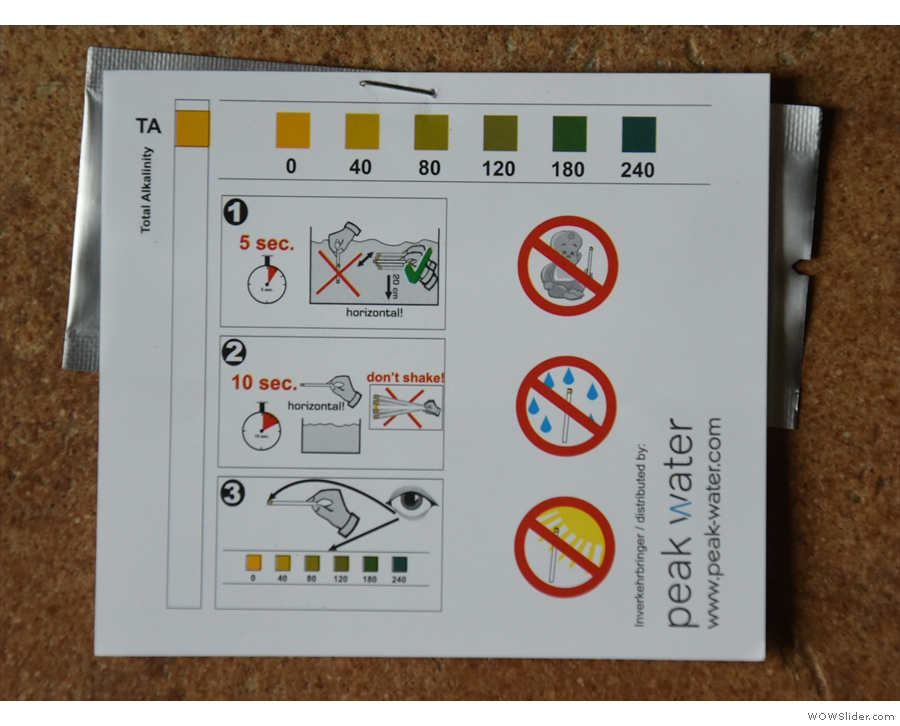
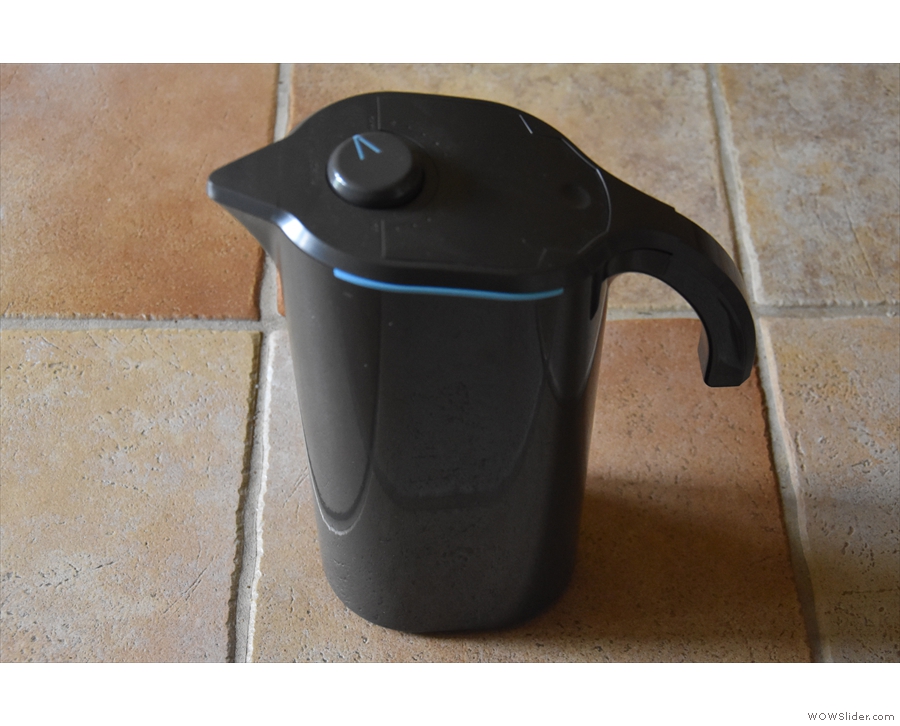
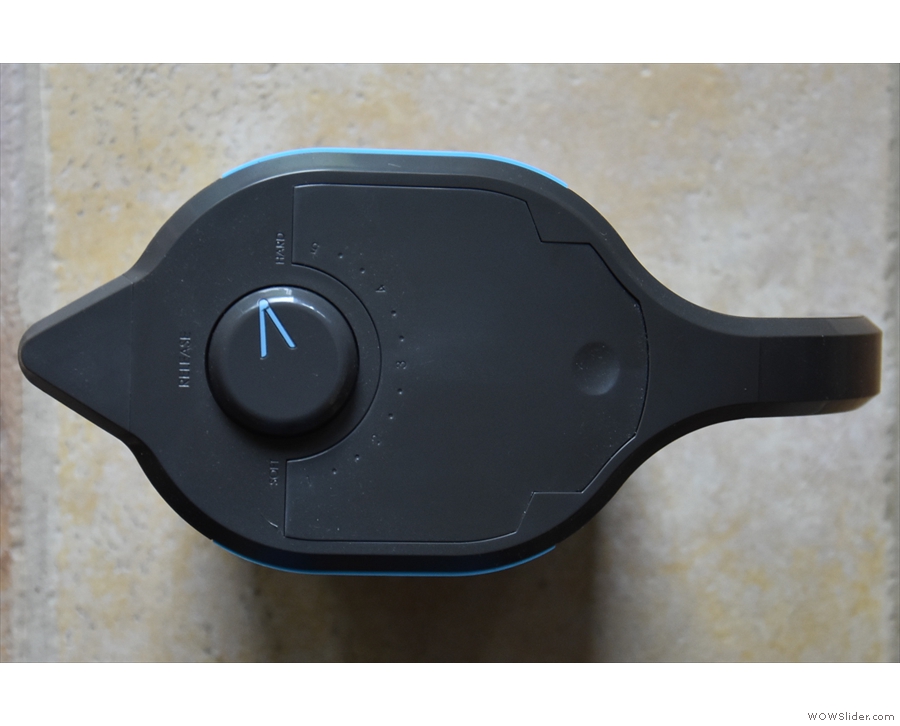
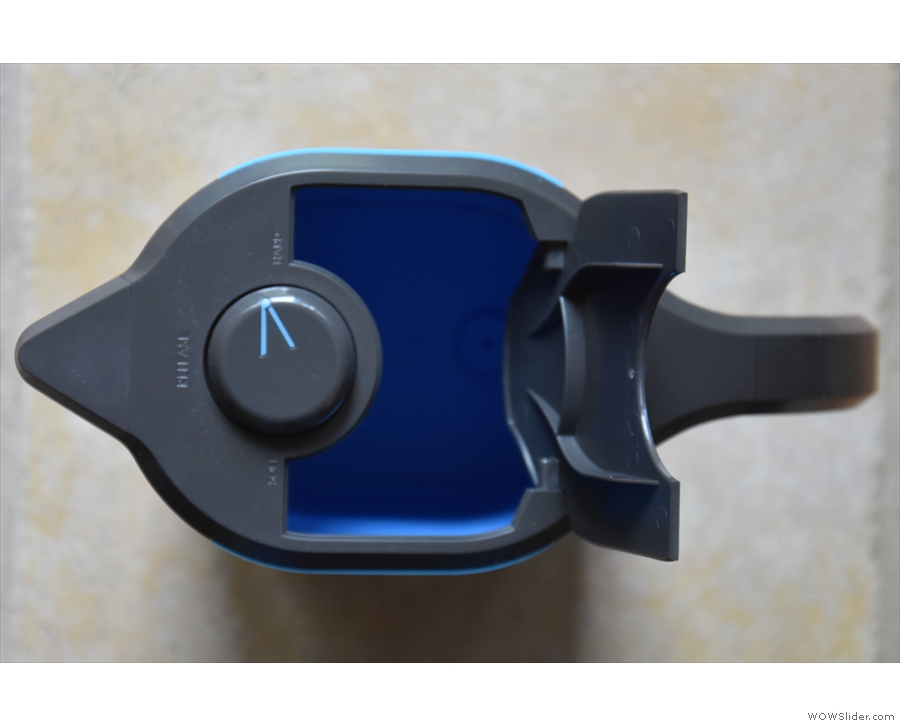
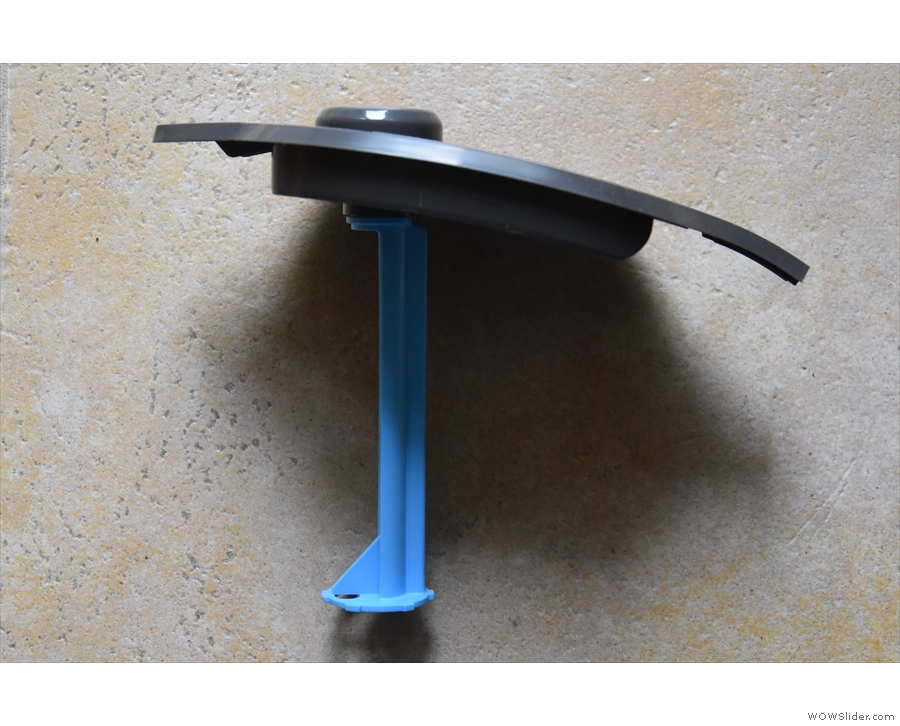
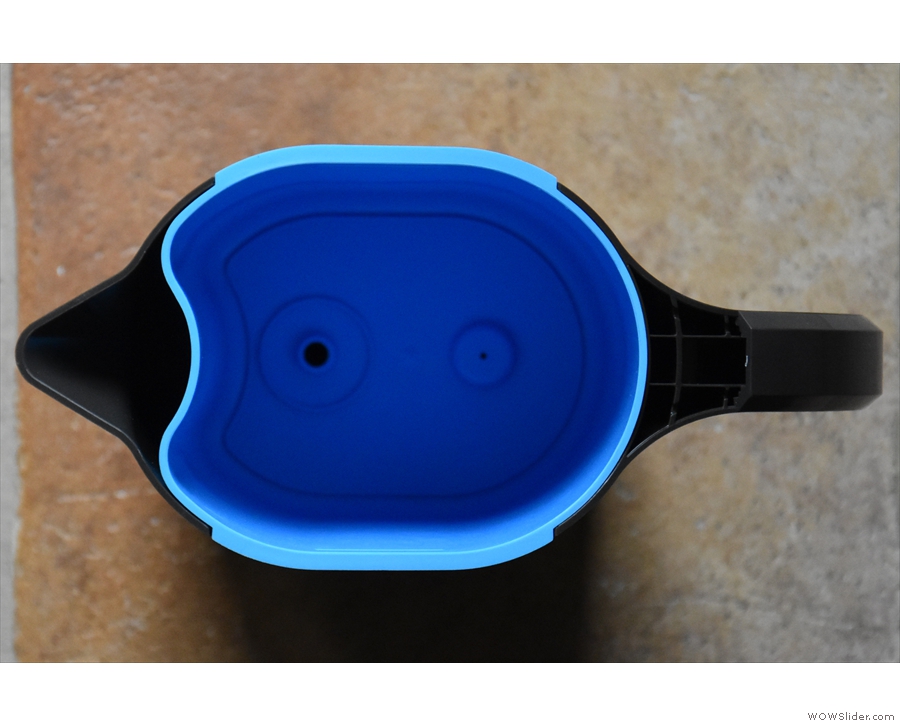
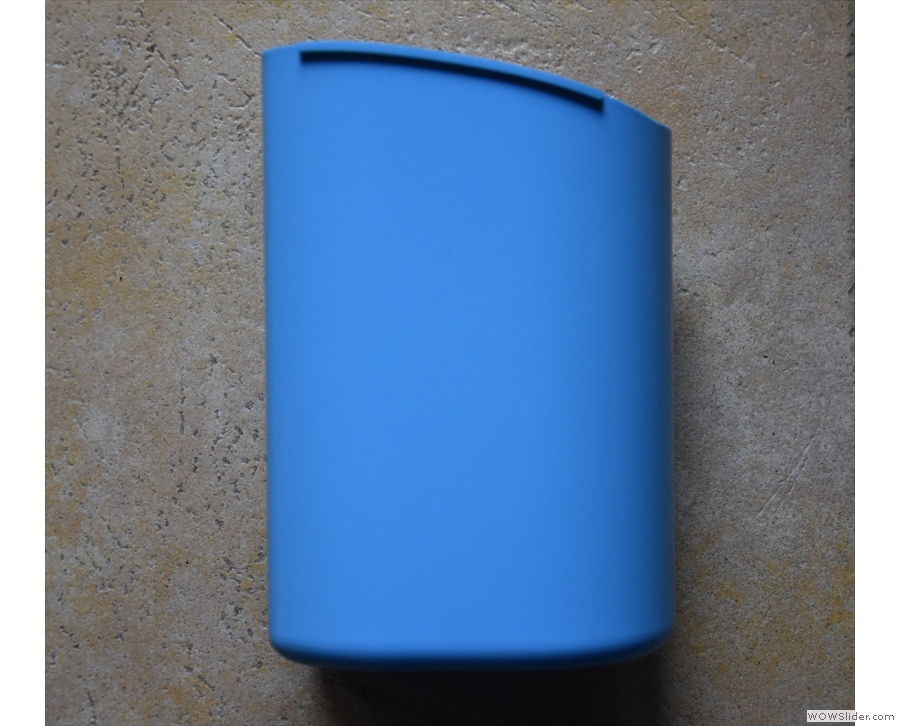
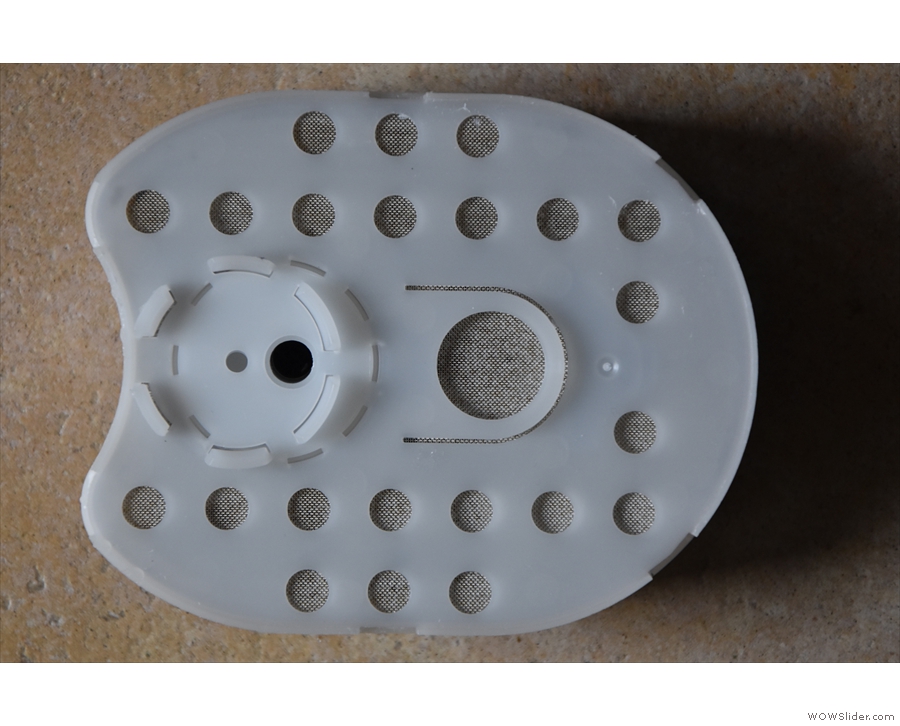
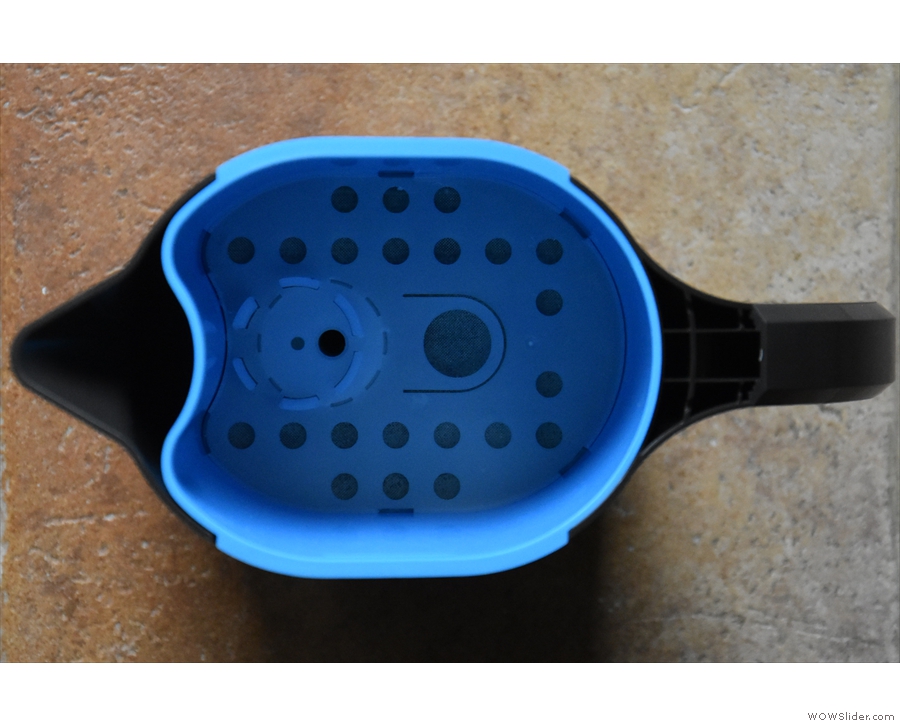
 1
1 2
2 3
3 4
4 5
5 6
6 7
7 8
8 9
9 10
10 11
11 12
12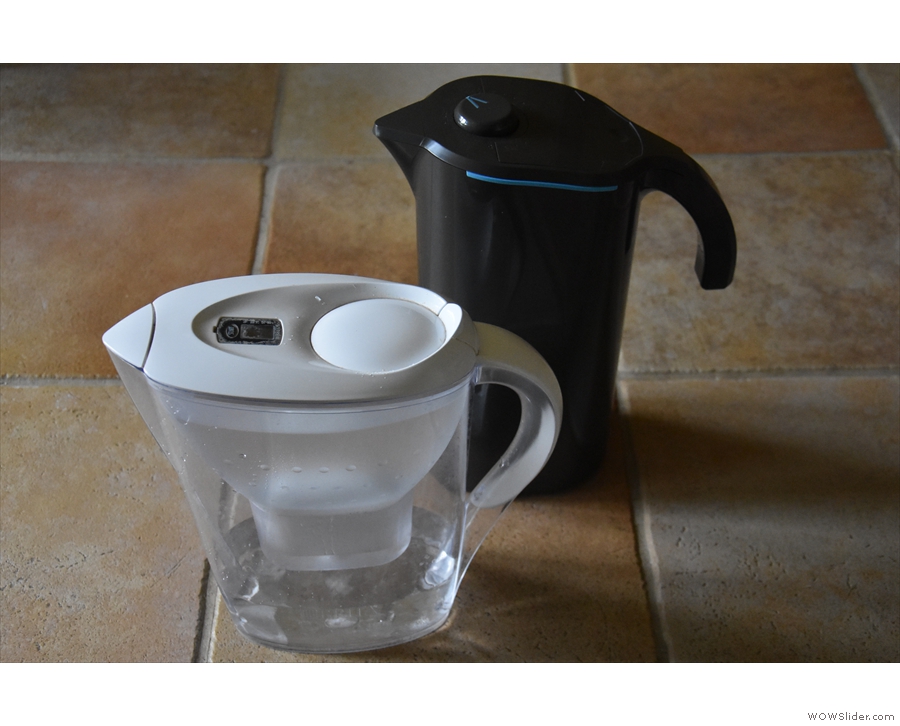
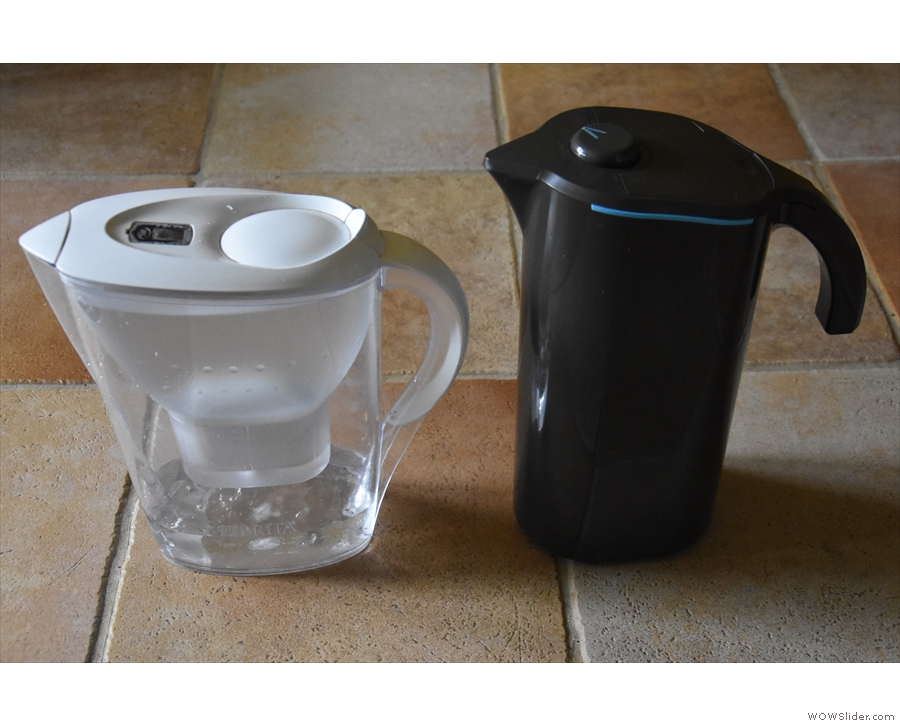
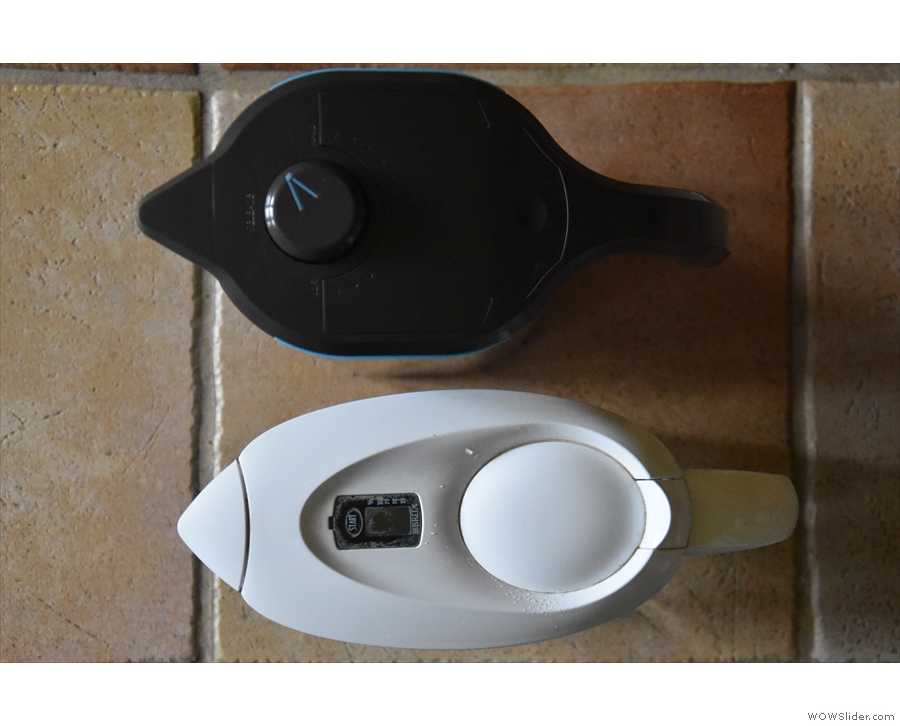
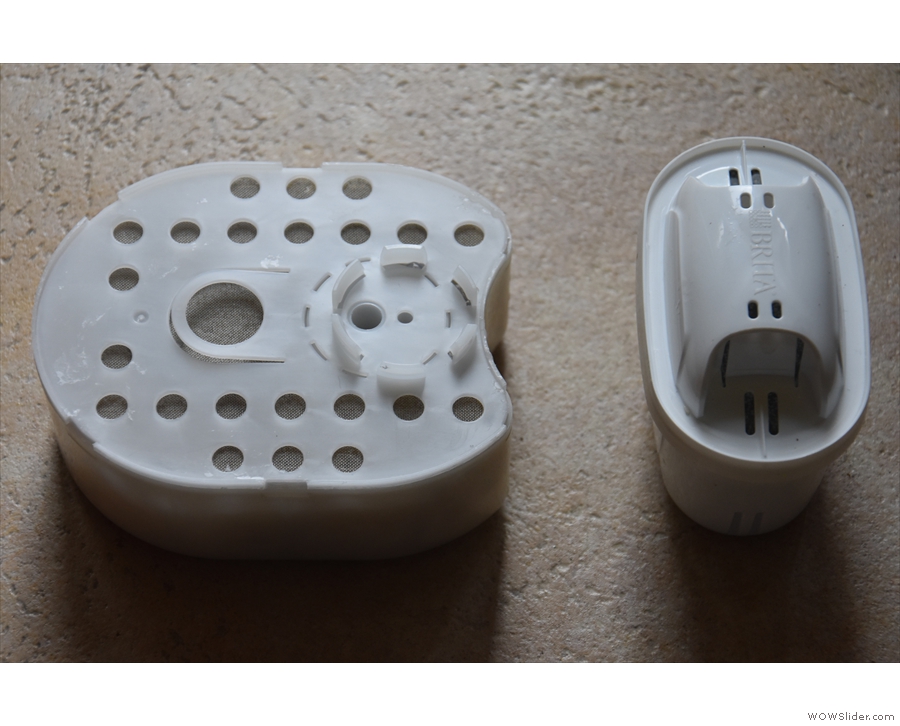
 1
1 2
2 3
3 4
4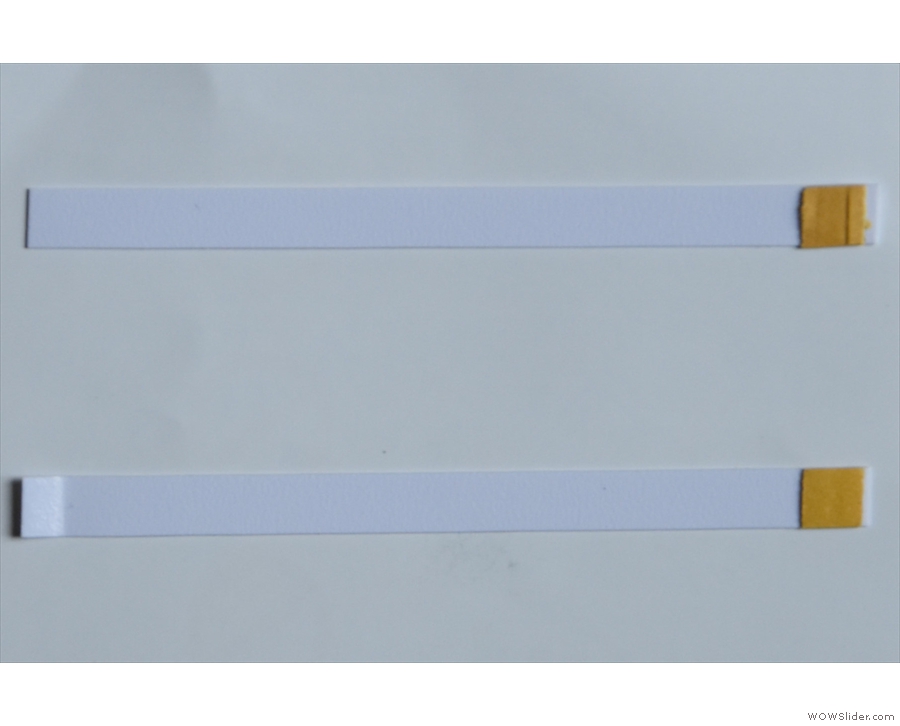
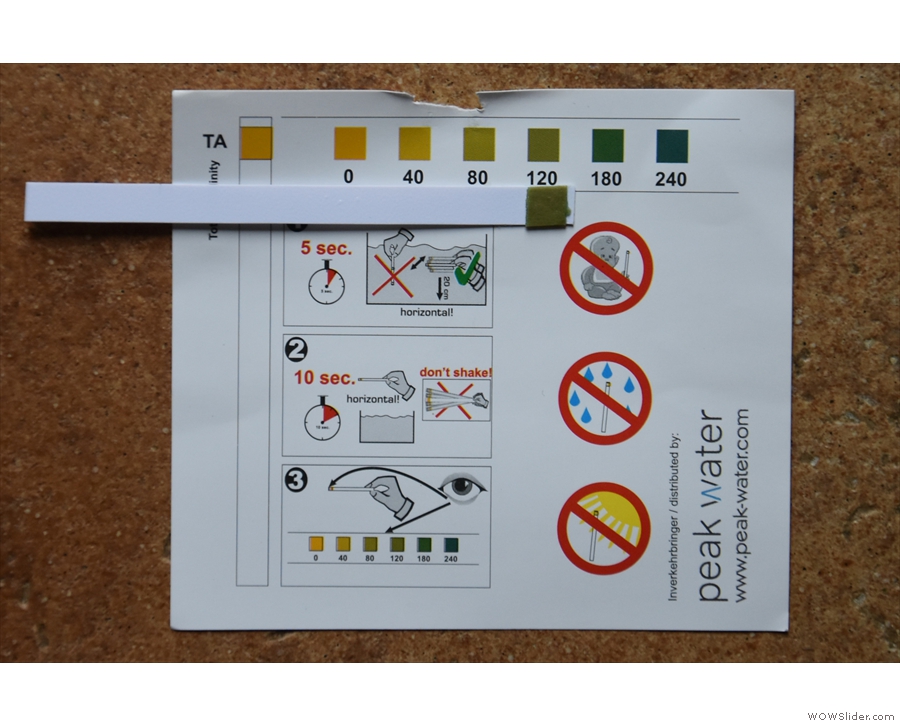
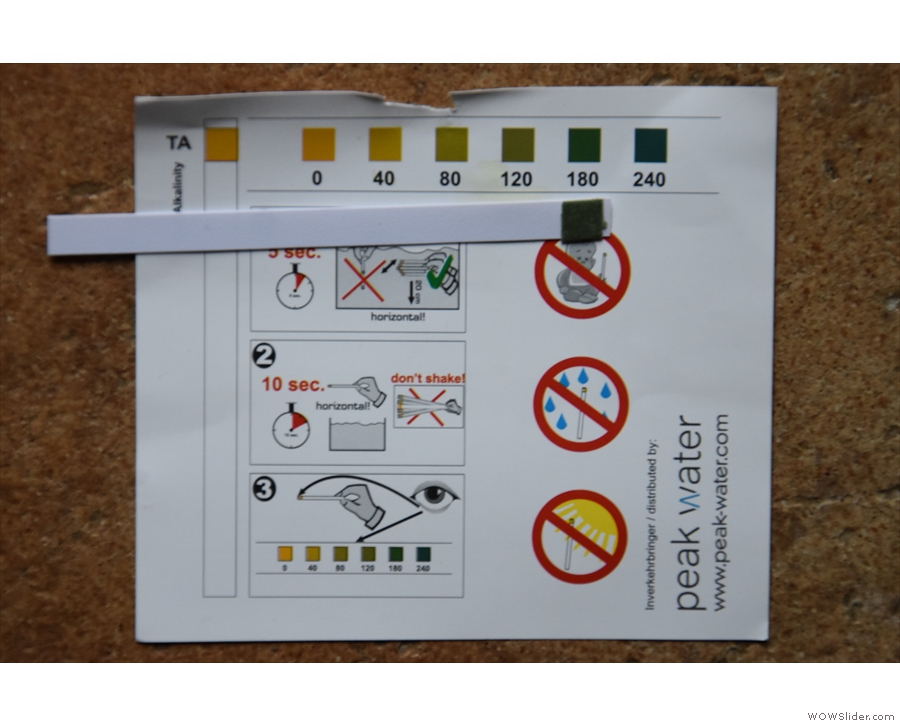

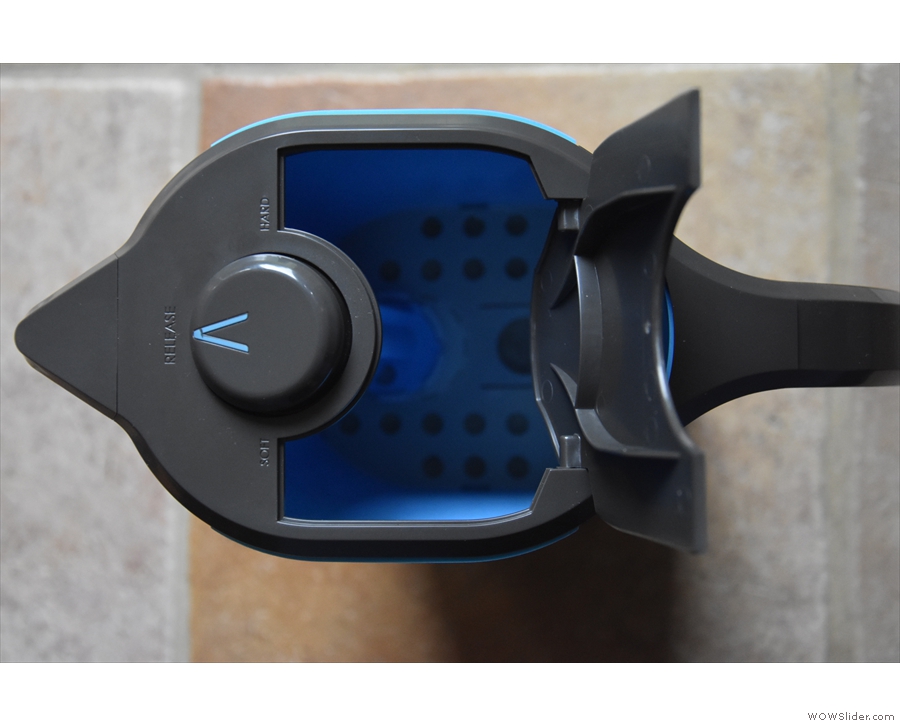
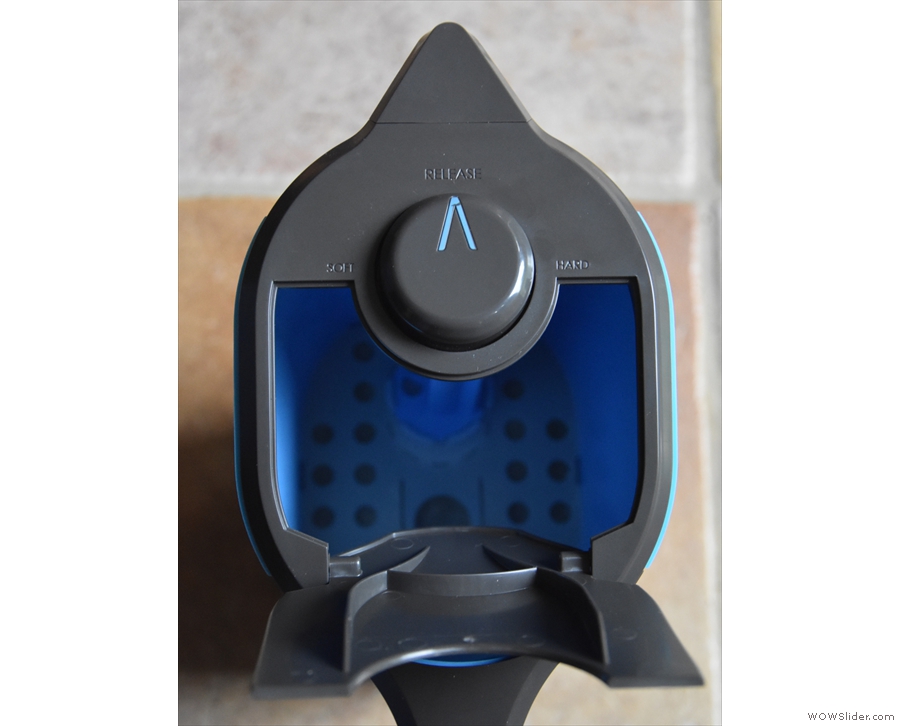

 1
1 2
2 3
3 4
4 5
5 6
6 7
7
Thanks for that.
Save a lot of people wasting their money.
My qualms on all water filters, the build up of microbes in hat inviting warm damp environment.
A useful comparison would have been with bottled spring water.
Another comparison would have been with barista water. Using a top end espresso machine for espresso, amazing difference compared with Brighton tap water.
Hi Keith,
I’m not sure I’d agree with your conclusion that I’ve saved a lot of people wasting their money. I think whether or not the Peak is worthwhile is down to a combination of individual circumstances. I’ve updated the post to reflect that.
I didn’t do a comparison to bottled spring water because of my dislike of single-use plastics and the economics of bottled water in general. Barista water, as far as I know, has the same drawback (it comes in single-use plastic bottles). I also don’t think that it’s commercially available.
Brian.
Pingback: Making Coffee at Home: Water | Brian's Coffee Spot
Your initial review gave the impression not worth the money, and is expensive. I have not revisited your revised review.
Lifetime of the filters, do they deteriorate in use?
My thoughts, not an attractive design, but if compare with other filter jugs on the market sleek and elegant. But too tall.
I am baffled why not boro-silicate glass. Not plastic, and can see the contents. I guess cost.
Barista water I have tried and excellent. Availability I do not know. Their website shows a silly video, nothing else. Maybe it was a concept, nothing more.
I suggested compare with spring water as have a control. If lack a contrail, any evaluation of anything meaningless if lack a control
But I would not disagree water in plastic, any use of plastic not good, though not always in plastic, There is spring water in glass bottles, even in cans, which seems a bit over the top.
You do though have two options if want decent water. That in Guildford not pleasant to drink, let alone make coffee.
Visit your local coffee shop. In these desperate times they may be grateful to have something anything to sell, as unless allowed to spread tables into the street sadly few will survive. A kiosk a viable business model for takeaway coffee, a coffee shop not, the overheads are too high.
Your other option is the spring water feeding into the River Wey. Walk upstream from Guildford in direction of Godalming, where Pilgrims Way crosses the Wey a spring flows into the Wey, once upon a time a ferry. If reach a foot bridge and a sandy stretch walked too far. Collect water away from the river. Filtered courtesy of the North Downs.
To quote from your comment:
“You do though have two options if want decent water. That in Guildford not pleasant to drink, let alone make coffee.
“Visit your local coffee shop. In these desperate times they may be grateful to have something anything to sell..”
Which is a suggestion that I made in my related article on water in my Making Coffee at Home series.
Which you commented on, saying “good idea”.
And which you are now suggesting back to me with no reference or even acknowledgement.
Regarding your assertion that a coffee shop is not a viable business model for takeaway coffee, I’d say the jury is out. Both the speciality coffee shops in Guildford that have re-opened as takeaway only (Canopy and Krema) tell me otherwise. Whether this is viable long-term, I (and they) don’t know, but I would not dismiss it out of hand.
Brian.
I was an early backer of Peak as well – I used to be a Colonna regular when I lived in Bath circa 2013, so have followed Maxwell’s adventures with roasting and water since then. I’ve come to much the same conclusion as you (again, with a similarly lousy palette – I can tell when the water I’m using is completely hopeless, but the range from fine to excellent is too subtle for me to detect). The design isn’t great, but it’s basically a prototype, and cost was a massive factor so I can forgive all that. And there seems to be some suggestion that backers will receive retooled pieces as they become available, which is exciting.
My main initial gripe is with regards the cleanliness of the unit – the manual suggests it can be kept in or out of the fridge – I experimented with it out for the first month (keeping a keen eye on the date when they suggested the filter would need replacing) and found that long before it ‘expired’, it really began to smell quite bad. So lesson learned, it’s now in the fridge – maybe empty, maybe not (being opaque it’s impossible to tell without just tipping it upside-down over the sink). It’s coming up on the expiry of the second filter, so I’ll have to give it a smell and see if there’s any unpleasantness creeping in this time.
tl;dr – I agree, it’s a brilliant, if flawed concept, and not a definite ‘must buy’. On a case by case basis, I’d recommend anyone keen waits for a V2.0 before buying.
Pingback: 2020 Awards – Best Saturday Supplement | Brian's Coffee Spot
Pingback: 2020 Awards – Most Popular Coffee Spot | Brian's Coffee Spot
I found some grainy matter on the bottom of the pitcher. So I have been drinking this residue. Anyone?
The simple answer is I don’t know. Have you contacted Peak Water about it?
Brian.
Almost certainly some of the carbon escaped from the filter. It’s in the FAQs on the Peak website.
Pingback: Coffee Spot Awards 2021 | Brian's Coffee Spot
Pingback: 2021 Awards – Most Popular Coffee Spot | Brian's Coffee Spot